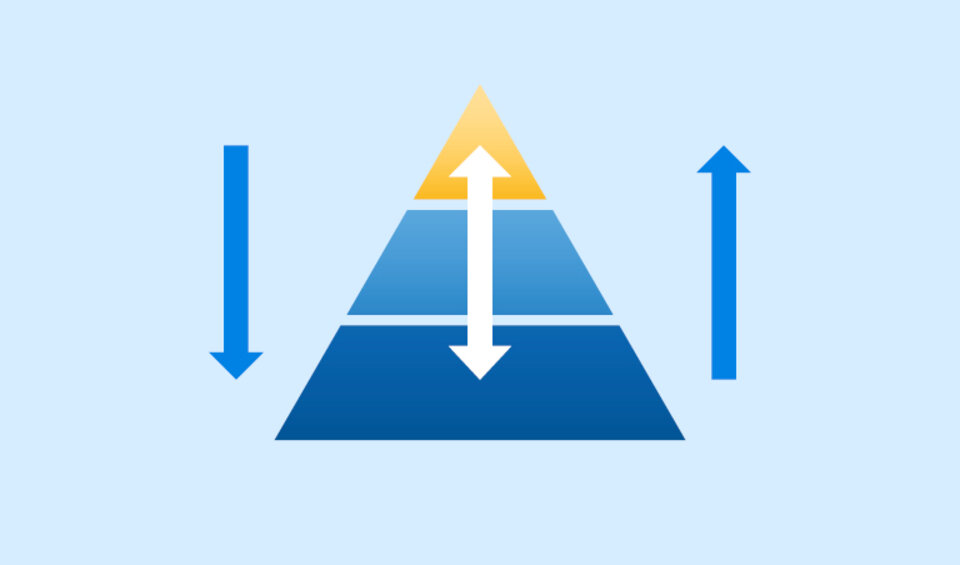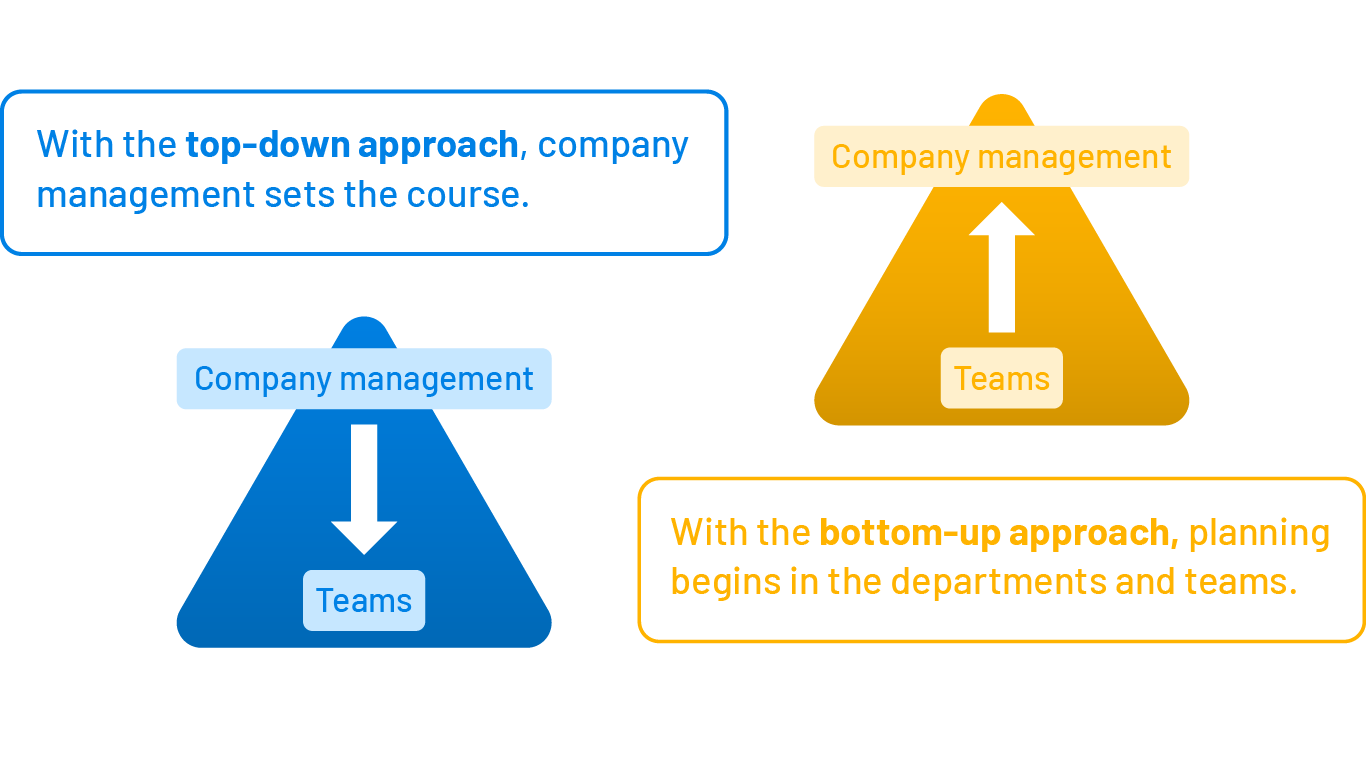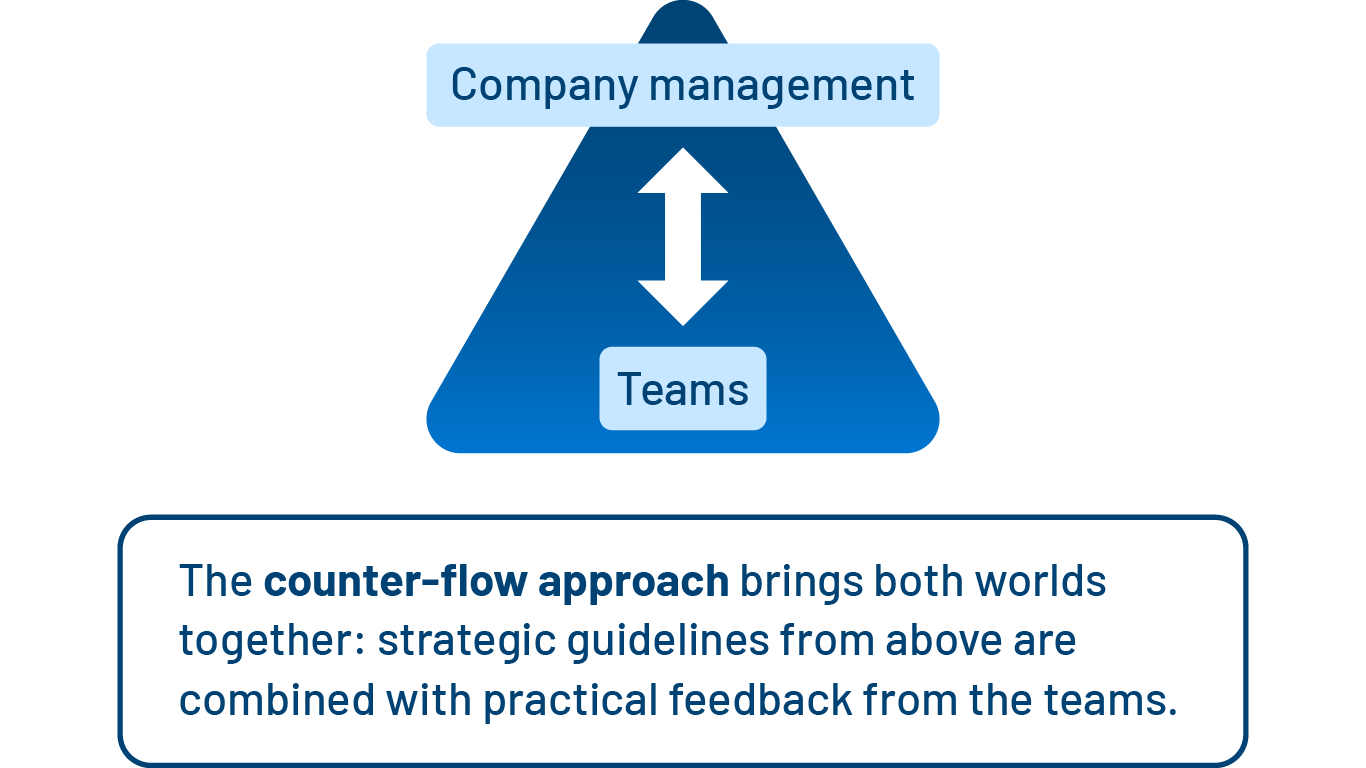How Top-Down Planning Works in Controlling
In the top-down method, company leadership sets the direction. Management defines strategic goals and overarching objectives, which are then broken down across the organization. Departments and employees align their work accordingly — like a command flowing from the bridge to the operational level. This approach is fast, efficient, and ensures all departments work toward a common goal.
Bottom-Up Planning Approach: Embedding Operational Expertise
The bottom-up approach works in reverse. Planning starts in departments and teams, where detailed operational plans are created and aggregated upward into a comprehensive corporate strategy. Advantage: Planning is practical because it is directly based on the experience and data from day-to-day operations.
Counter-Flow Planning: Integrating Top-Down and Bottom-Up Strategies
The counter-flow approach brings together the best of both top-down and bottom-up methods. Management sets strategic guidelines, which operational teams then review, adjust, and enhance with actionable measures. This feedback flows back to leadership, who finalizes the integrated plan. For controlling and FP&A teams, this approach enables real-time data consolidation across all departments, ensures that targets are both ambitious and realistic, and effectively combines strategic alignment with operational feasibility.
Process Steps:
-
Top-Down Guidelines: Management sets objectives and boundaries.
-
Operational Planning: Departments develop actionable measures and assess feasibility.
-
Bottom-Up Feedback: Insights flow back to leadership.
-
Finalization: Management approves the integrated planning approach.
Top-Down vs. Bottom-Up vs. Counter-Flow: Which Planning Approach Adds the Most Value?
Whether top-down, bottom-up, or countercurrent: each method has its own strengths. Top-down planning delivers speed and centralized control, while bottom-up planning thrives on operational expertise and employee involvement.
For FP&A teams and controllers, the real power comes from combining both top-down and bottom-up strategies. By linking strategic goals with operational realities, this integrated planning approach ensures results that are ambitious, realistic, and fully supported across the organization.
How can this be put into practice?
Integrated controlling solutions for top-down, bottom-up, and countercurrent planning
Even the best planning approach loses effectiveness if it’s stuck in fragmented tools or manual workflows. Integrated controlling software is particularly effective for cost center planning, allowing departments to submit their plan data, which is then consolidated in real time. Allevo connects strategy and operations through seamless SAP integration, eliminating manual processes.
- Excel Frontend
Excel becomes your planning interface, fully integrated with SAP. Users retain familiar functionality while working with live SAP data. Transactions are posted automatically, reducing errors and rework.
- Custom Web Interface
For complex workflows, custom web interfaces visualize top-down objectives while integrating operational bottom-up planning through the counter-flow approach. Workflows, approvals, and feedback are fully integrated into SAP.
Both options can be combined, allowing you to use the most suitable solution for each scenario — one that is flexible, efficient, and perfectly tailored to your business processes.
👉 Result: Your planning process becomes faster, more reliable, and error-free, giving you valuable time to focus on what truly matters: analysis, insights, and informed decision-making.


